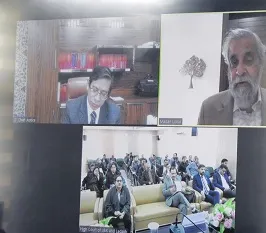Jammu, Mar 3: The two day orientation programme on “Wildlife and Forest Conservation Laws,” organised by J&K Judicial Academy in collaboration with WWF-India, for Judicial Officers and J&K Forest Department concluded here today.
The brain storming deliberations of day one had already set the tone and tenor of the second day orientation.
On the second day, the first session was jointly conducted by Moulika Arabhi and Tejas Singh Kapoor, CEL,WWF-India, who gave a legal and policy overview on Environment, Forest and Wildlife. They said that there have been three forest policy announcements in independent India; the Forest Policy of 1952, the National Commission on Agriculture, 1976 (NCA) and the 1988 Forest Policy. The policy emphasised scientific conservation and emphasis was laid on conversion of low value mixed forests to high value plantation of commercial species.
Rohit Rattan, Associate Coordinator, Western Himalayas Program, WWF-India, chaired the second session.
The resource person deliberated on conservation issues and challenges in Jammu. He said that the twin UTs of J&K and Ladakh are divided into three main geographical regions namely the Pir Panjal, the Zanskar and the middle mountain of Lesser Himalaya. It supports the vegetation from sub-tropical zone to alpine zone and forms a complex habitat which supports a number of rare, endemic and threatened plants, he added.
He said that the local inhabitants over exploits some of the commercially viable medicinal plants for personal gains which are traded either in the local or outside the UT markets. He emphasised that Central and UT/State Governments have attempted for the in-situ conservation of biological resources all over India and at present, the UTs of J&K and Ladakh comprises of one Biosphere Reserve, 4 National Parks and 15 Wildlife Sanctuaries for the in-situ conservation of biological diversity. These protected areas cover different altitudinal zones ranging from tropical to alpine. He stated that development of conservation technologies of threatened/economically important plants will not only help in promoting mass cultivation in farmers fields but also, help in reducing pressure on wild stock.
All the sessions were interactive during which all the participants actively participated and shared their experiences, and also discussed various aspects of the subject topics. They also raised a number of queries which were answered satisfactorily by the worthy resource persons.
The programme concluded with Yash Paul Bourney, Director, J&K Judicial Academy presenting vote of thanks.







